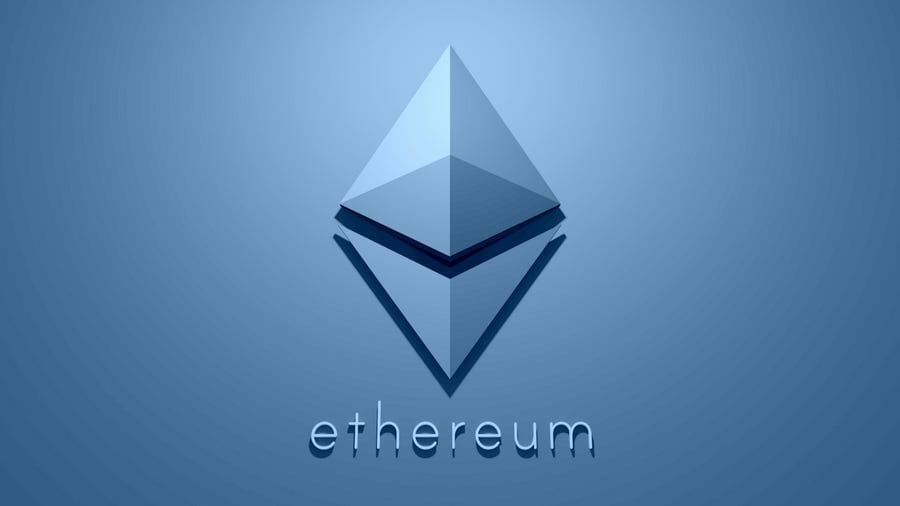When people talk about cryptos, it’s generally either about Bitcoin, with its volatility and value storage capabilities, or it’s about Ethereum. It’s not just because it’s the second biggest coin by market cap, although it presently is, but because it offers much more options to its users than just acting as a potential reserve currency or a place to put your money where the government can’t get to it.
Ethereum was invented in 2013 by a Canadian-Russian programmer named Vitalik Buterin. It was crowdfunded in 2014, and went live in July of 2015. The essential promise behind the cryptocurrency and its attendant series of technological add-ons is that Ethereum was intended to be the world’s decentralized supercomputer. It’s since become considerably more.
At its core, it’s a decentralized, open source blockchain with smart contract functionality. The platform lets anyone build permanent and immutable decentralized applications (d’apps) on it, which users can use to interact. These decentralized applications have snowballed into something called decentralized finance (DeFi), which give access to a broad range of financial services without the necessity of traditional financial intermediaries, such as brokerages, exchanges, or banks. This has allowed for the creation of non fungible tokens (NFT), which are tokens connected as digital representations of digital works of art or other items existing in the real world, which can therefore be sold as property.
You can also think of Ethereum as a nesting blockchain of sorts, as it plays host to other cryptocurrencies, which operate as ERC-20 tokens on top of its blockchain, and have used the platform for initial coin offerings (ICO). We’ll get into these terms in a bit.
The EVM
The Ethereum Virtual Machine (EVM) is the environment for execution of transactions in Ethereum. It’s a program that’s separated from the other files and processes performed by the virtual computer that’s responsible for making sure each node maintains the same information after every transation, and is used to enable network consensus.
The EVM’s computing architecture is Turing-complete. But it’s commonly used to create both fungible (ERC20) and non-fungible tokens (ERC721) which can be used for crowdfunding (via ICO’s) DeFi, decentralized exchanges (DEX), decentralized autonomous organizations (DAOs), games, prediction markets, and gambling.
Doing business in the EVM isn’t cheap, though.
If you’ve ever heard cryptocurrency aficionados complaining about the price of gas, they’re not likely talking about petrol. Instead, they’re talking about “gas” which is a unit of measure used in the EVM to determine the calculation of a transaction fee. Everything you can do in the EVM comes with a gas cost, which is supposed to be proportional to the amount of computation and storage resources a nod needs to perform the operation.
Each transaction involves the specification of a gas limit and gas price. The limit is the maximum amount of gas the sender is willing to use in the transaction, and the price involves the amount of ETH the sender wnat sto pay to the miner per unit. The higher the price, the more incentive the miner has to include a transaction in their block and therefore the faster the change to the blockchain.
The sender buys the gas limit up front and gets a refund of anything he didn’t use at the end. If the transaction runs out of gas, the transaction is reverted but the sender still pays for the gas he used. Gas prices come in denominations called Gwei, which are subunits of ethereum equal to 10−9 ETH.
Ethereum 2.0
Ethereum isn’t without its problems. The first and major problem is one it shares with every other cryptocurrency in that it only allows for a certain amount of transactions per second, and everyone else gets to wait for the next block to close. That can be annoying if you’re trying to implement a code change to a program you’re working on, and especially given that the price of doing business on Ethereum is exorbitantly high, it’s enough to drive people away and represents a significant barrier to entry for others.
Buterin’s solution for this is implementation of what’s being called Ethereum 2.0, which includes a series of upgrades including a jettisoning of the Proof-of-Work consensus mechanism in favour of the energy friendly Proof-of-Stake, and a technique called sharding, which is meant to increase transaction throughput.
Sharding basically splits the consensus gathering work up among the various nodes on the blockchain, which then only have to work on verifying the contents of their shard. After which, the shards are returned as an aggregate, and consensus is gained.
Ethereum 2.0 will be launched in three phases:
- “Phase 0” was launched in December 2020 and created the Beacon Chain, which is a proof of stake blockchain that will act as the central consensus hub for the new ethereum.
- Phase 1 will include sharding and connect them to the Beacon chain.
- Phase 2 will implement state execution in the shard chains with the present ETH 1.0 chain expected to become a shard of ETH 2.0.
ICO’s, Decentralized Finance and the future?
Beyond the technical specifics of how the EVM creates coins and tokens that can otherwise be used to fund individual organizations and projects, we have the realities behind these issues. The realities are the same as with any new technology: that both their value and their potential for harm stretches from who uses them.
Essentially, Ethereum tokens are smart contracts that make use of the Ethereum blockchain. Let’s get that out of the way first. Plenty of the other blockchains we talk about in this series will actually be (or were) ERC-20 coins, which means they were created using Ethereum and may require Ethereum to run, unless they’ve otherwise graduated to their own blockchain. ERC-20 is similar to bitcoin, litecoin and other cryptocurrencies in that they’re blockchain-based assets that possess value and can be traded.

Two years ago, enterprising companies would create their own coins using ERC-20 tokens and hold fundraising parties called Initial Coin Offerings (ICO) wherein potential investors would throw their money at this nascent coin (and the company fielding it) on the odd hope that the $1000 they put in today when it’s trading at $0.00001 turns into a fortune when it hits a penny. You get the idea.
These were unregulated and many were scams. The company receiving the money had no legal incentive to actually use the millions of dollars thrown their way to better their company, and so often enough it was time for lamborghini rides and getting into the Real Estate
market in Toronto, as Vanbex, listed above, did.
That’s the risk you run with unregulated industry’s, though.
The latest and updated version of the unregulated and thoroughly questionable industry is Decentralized Finance (DeFi).
The promise of decentralized finance is to offer the same broad array of financial services as traditional finance (TradFi), but without the need for middlemen like brokerages, exchanges or banks. One of the ways it allows this is by giving users the ability to borrow against their holdings or lend them out to get interest. It’s one of the key ways that the Ethereum blockchain maintains its status as a truly revolutionary technology, and its benefits and pitfalls will be the focus of a future article.
But there’s something to be said for a lack of regulation, given that humans have this odd tendency to stab each other in the neck, figuratively and sometimes literally, if it means getting the slightest advantage over their competitors. Most of the DeFi types I’ve spoken with about the subject say they’ll continue to get along and everything and everyone is devoted to equity and fairness, but we’ll see. Regardless, it’ll be an interesting experiment if you’re watching from the outside. I can’t imagine having any fingernails left if you’re somehow involved.
Naturally, we’ll update this article as Ethereum develops.
—Joseph Morton

